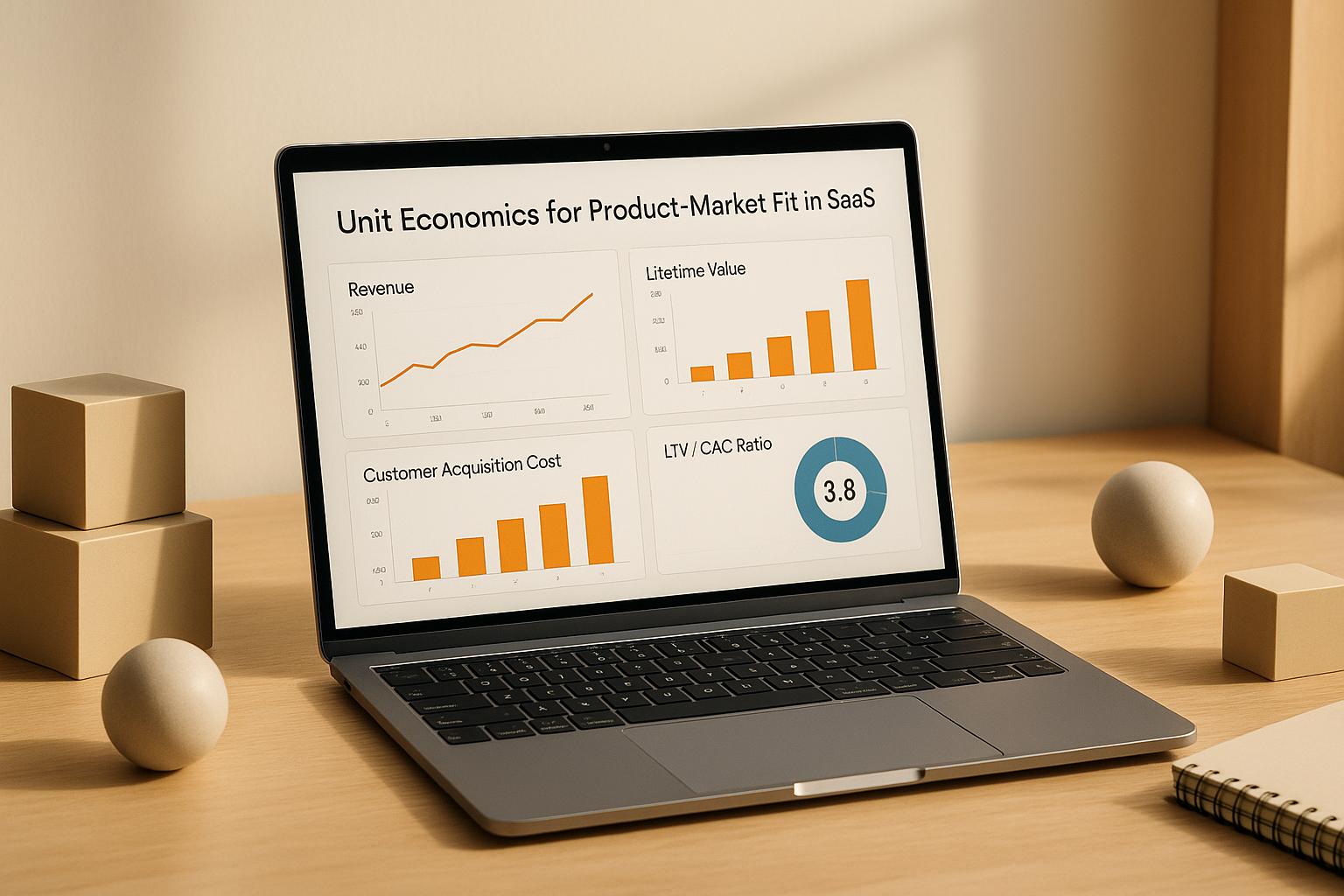How Cross-Selling Boosts Customer Retention

Cross-selling is a proven way to keep customers loyal while increasing revenue. By offering complementary products or services that match what a customer has already purchased, businesses can strengthen relationships, reduce churn, and grow Customer Lifetime Value (CLV). The key? Personalization and timing. Here's how it works:
- Use customer data to suggest relevant products at the right time, like during post-purchase follow-ups or key milestones.
- Segment customers based on behavior, purchase history, and engagement to tailor offers.
- Leverage tools like CRM systems and FP&A analytics to track insights, measure success, and refine strategies.
Done right, cross-selling feels helpful, not pushy, and leads to higher repeat purchase rates and stronger customer trust. Businesses that prioritize understanding customer needs can see sales increase by up to 35% through personalized recommendations.
Want to make cross-selling work for your business? Focus on timing, relevance, and tracking results to build lasting customer loyalty while boosting revenue.
Map Customer Journeys to Find Cross-Selling Opportunities
Understanding how customers interact with your business and identifying key moments in their lifecycle can reveal the best opportunities to offer additional products or services. By mapping out the customer journey - from the first interaction to ongoing engagement - you can determine when customers are most open to new suggestions.
For companies in their growth phase, this approach helps uncover patterns in customer behavior. It becomes easier to see which interactions lead to repeat purchases or drive deeper engagement. Instead of relying on random sales pitches, you can create well-timed, strategic offers that genuinely align with customer needs. This method lays the groundwork for identifying the right touchpoints and tailoring your approach.
Find Key Touchpoints in Customer Interactions
The most effective cross-selling happens during specific moments when customers are naturally more open to hearing about relevant offers.
- Post-purchase follow-ups: After a purchase, customers are often thinking about how to maximize their investment. This is an ideal time to suggest complementary products or services.
- Product usage milestones: When customers achieve a significant goal or milestone, they may be ready for the next step. For instance, a software company might recommend advanced features once users hit a key achievement, while service providers could offer additional support during busy times.
- Customer support interactions: These moments often reveal immediate needs. Support teams trained to listen for opportunities can recommend helpful add-ons or upgrades while resolving issues.
- Onboarding sequences: Introducing options during onboarding can be effective if done gradually. As customers grow more familiar with your product or service, you can showcase additional features that align with their needs.
Timing is everything. Suggestions should align with when customers are already considering their next steps. For example, Uniqlo successfully used this strategy in 2023 with personalized email campaigns. By including "You May Also Like" sections, they targeted customers who had shown interest in specific products, leading to higher click-through rates and more repeat purchases.
Group Customers for Targeted Offers
Identifying key touchpoints is just the first step. To make cross-selling efforts feel relevant and personalized, segment your customers based on their behavior, preferences, and needs. A one-size-fits-all approach rarely works.
- Behavior-based segmentation: Heavy users might appreciate premium upgrades, while occasional users could benefit from support services or simpler add-ons.
- Purchase history segmentation: Frequent buyers may respond well to bundled offers, while those who make larger, less frequent purchases might prefer comprehensive packages.
- Engagement level segmentation: Highly active customers are likely open to advanced features, whereas less engaged customers might need educational content or basic add-ons to get more value from their purchase.
- Company size and industry segmentation: For B2B businesses, small companies often need different solutions than larger enterprises. For example, a marketing agency could offer DIY tools to startups and full-service packages to established organizations.
Phoenix Strategy Group exemplifies this approach by helping growth-stage companies use CRM and FP&A tools to consolidate customer data and track interactions. This enables businesses to identify when customers are ready for services like financial planning, strategic advisory support, or advanced analytics.
"When you put the Right Data in front of an Empowered Team, they get better."
Combining multiple segmentation factors often yields the best results. Imagine a customer who frequently makes small purchases and actively engages with your content - they might be ready for a premium subscription. Meanwhile, someone who occasionally makes large purchases but rarely engages might prefer a comprehensive service package requiring minimal follow-up.
It’s also worth considering predictive factors. Customers showing increased usage or signs of business growth often signal readiness for additional services. By monitoring these trends in your CRM system, you can time your offers perfectly, ensuring they resonate with your customers and enhance their experience with your brand.
Use Data to Create Personalized Cross-Selling
Personalized cross-selling doesn’t just boost revenue - it strengthens customer loyalty by addressing their changing needs. The key? Turning raw data into actionable insights. The difference between generic suggestions and tailored recommendations lies in how well you understand each customer’s preferences, habits, and buying patterns. Businesses that personalize recommendations using customer data can see sales increase by as much as 35%, making it a powerful strategy for companies aiming to grow revenue from their existing customer base.
To achieve this, you need to go beyond surface-level demographics and build a deeper understanding of your customers. This includes analyzing their purchase history, browsing habits, engagement trends, and even the timing of their interactions with your business. By connecting these dots, you can anticipate their needs and offer solutions before they even ask.
Use CRM and FP&A Tools for Customer Insights
Customer Relationship Management (CRM) systems are the backbone of understanding your customers on a detailed level. These tools gather and consolidate data from multiple touchpoints - like website activity, email interactions, purchase records, and customer support conversations - giving you a complete picture of each customer relationship.
Modern CRM platforms do more than just manage contact information. They track behaviors like product views and time spent engaging with your content, helping you uncover cross-selling opportunities that might otherwise go unnoticed. For example, identifying products that are often purchased together can reveal bundling opportunities, while tracking navigation patterns on your website can highlight moments when a customer is considering a purchase.
To complement CRM data, Financial Planning & Analysis (FP&A) tools add a critical layer of financial context. These tools help you evaluate which cross-selling strategies deliver the best return on investment, track metrics like average order value and customer lifetime value, and even simulate the financial impact of potential approaches before committing to them. They answer key questions, such as which customers are most profitable to retain and how cross-selling efforts might influence overall revenue.
Interestingly, 73% of sales teams now use shared CRM tools to align their efforts and reduce customer churn. By ensuring everyone has access to the same insights, these tools help create a seamless and consistent cross-selling experience, avoiding mixed messages and missed opportunities.
Build Custom Offers Using Customer Data
Armed with these insights, you can craft offers that align perfectly with your customers’ needs. The goal is to translate data into personalized recommendations that feel relevant and timely. This involves not just understanding what customers have purchased, but also why they made those choices and what they might need next.
Predictive analytics can help identify customers who are ready for targeted offers. For instance, customers showing increased engagement or signs of growth may be ideal candidates for premium services or advanced features. Similarly, timing your offers around key milestones - like anniversaries or contract renewals - can increase the likelihood of engagement.
Dynamic segmentation is another game-changer. Instead of relying on static customer categories, advanced systems continuously update segments based on real-time behaviors and shifting needs. A customer who starts small might later show signs of being ready for larger purchases or upgraded services.
Personalized outreach has proven to be highly effective, with 48% of sales leaders reporting that it significantly improves customer retention. By tailoring offers to a customer’s specific circumstances, challenges, and goals, businesses can make cross-selling feel like a natural extension of the value they already provide. Additionally, 49% of sales teams use customer success data to refine their messaging and pinpoint the best moments to introduce new products or services.
One company excelling in this area is Phoenix Strategy Group. They specialize in helping growth-stage businesses use CRM and FP&A tools to build data-driven cross-selling strategies. Their expertise in data organization and analysis enables companies to implement systems that deliver clean, actionable insights - laying the groundwork for personalized recommendations that drive both revenue growth and customer satisfaction.
Cross-Selling Methods for Growth-Stage Businesses
For businesses in their growth phase, cross-selling isn’t about pushing unnecessary services - it’s about offering solutions that genuinely add value. When done right, these methods not only address customer challenges but also build stronger relationships. This approach works particularly well for service-driven industries like financial advisory firms, where trust and engagement are key.
Create Service Bundles and Special Offers
Service bundles can be a game-changer when designed with the customer’s goals in mind. The idea is to combine services that align with specific business needs or stages, rather than randomly grouping offerings. This makes it easier for customers to see the value and understand how the services complement each other to solve their problems.
Take Phoenix Strategy Group, for example. They’ve created tailored service tracks for middle-market companies:
- The Smooth Operator Track: This bundle focuses on helping founders build a business that runs itself. It includes services like system creation, revenue engine development, forecasting, team alignment, and valuation positioning. The goal? To help founders work smarter, not harder.
- The Big Leap Track: Designed for companies preparing to exit, this package includes exit readiness, due diligence systems, buyer marketing, negotiation support, post-deal integration, and strategies to maximize exit value.
What makes these bundles effective is their clarity and focus on specific outcomes. As Phoenix Strategy Group puts it:
"Your Business Isn't Cookie-Cutter. Neither Are We. Create your ideal combination of financial and revenue operations, delivered by our team who've built and sold 9-figure companies."
This emphasis on flexibility ensures each bundle meets unique business needs. Additionally, offering bundles at a discounted rate compared to standalone services creates an immediate sense of value, encouraging customers to try more while still protecting your margins.
Provide Educational Content and Helpful Resources
Sometimes, the best way to cross-sell is by educating your customers. When you address their pain points with helpful content, they’re more likely to see the value in additional services.
For example, webinars are fantastic tools for explaining complex services. A financial advisory firm might host a session titled "How Integrated Bookkeeping and CFO Services Accelerate Funding Readiness," walking attendees through the benefits of combining these offerings while answering their questions in real time.
Case studies can also make a big impact by showing real-world success stories. Imagine a case study highlighting how bundling bookkeeping, tax planning, and CFO services helped a tech startup increase client revenue by 30% while improving retention. That’s a compelling argument for cross-selling.
Other resources like ROI calculators, how-to guides, and industry reports can further engage customers. These tools not only position your company as an expert but also introduce additional services in a way that feels natural and helpful.
Collect Feedback to Improve Cross-Selling
Customer feedback is one of the most powerful tools for refining your cross-selling strategy. By continuously gathering insights, you can ensure your approach stays relevant and effective.
Post-purchase surveys are a great starting point. They can help you understand whether bundled services delivered on their promises and met customer expectations. Ask specific questions about the experience, such as how well the services integrated or whether the pricing felt fair.
For customers who decline cross-selling offers, follow-up calls can uncover barriers like budget concerns, timing issues, or misunderstandings about the benefits. Digital tools like in-app surveys can also make it easier to gather feedback, while tracking response patterns over time can reveal useful trends.
Your customer success team is another invaluable resource. They’re often the closest to your clients and can provide direct insights into their needs and challenges. Regular collaboration between sales and customer success teams can uncover new cross-selling opportunities and ensure your offers align with what customers actually want.
sbb-itb-e766981
Track Cross-Selling Results and Avoid Common Mistakes
Keeping tabs on your cross-selling efforts is crucial to ensure they strengthen customer relationships and boost long-term loyalty. Without proper measurement, you risk damaging those relationships instead of enhancing them. By focusing on key metrics, you can determine how well your strategy supports retention and customer satisfaction.
Important Metrics to Monitor
Using insights from tools like CRM and FP&A systems, you can connect your cross-selling efforts to measurable outcomes. Here are four key metrics that should guide your evaluation process:
- Customer retention rate: This is your go-to indicator of cross-selling success. If your strategy is working, customers will stick around longer. Check this metric monthly or quarterly to spot trends. A declining retention rate, even with increased cross-selling, signals that adjustments are needed.
- Customer lifetime value (CLV): This metric reveals whether customers are becoming more valuable over time. Effective cross-selling should lead to higher CLV as customers buy more and stay longer. Expressing CLV in dollars helps you see its financial impact clearly.
- Repeat purchase rate: A high repeat purchase rate shows that customers find ongoing value in your offerings. This is especially useful for service-based businesses, as it reflects whether customers trust and rely on your services over time.
- Average order value (AOV): Tracking AOV helps you see if customers are spending more per transaction. While this shouldn't be your sole focus, a steady increase in AOV alongside stable retention rates indicates your strategy is adding real value.
Most CRM systems can track these metrics automatically. To make the most of this data, set up monthly dashboards that highlight trends over time, rather than just one-off snapshots. This approach helps you identify patterns and refine your cross-selling strategy based on data, not guesswork.
Once you've reviewed these metrics, it's equally important to address common pitfalls that can undermine your efforts.
Common Problems and How to Prevent Them
Even with the best intentions, cross-selling can backfire if you fall into common traps. Being aware of these issues can help you avoid alienating your customers while pursuing growth.
- Too many offers: Bombarding customers with constant cross-selling messages leads to decision fatigue and frustration. Instead, limit yourself to one or two well-thought-out offers per interaction. Quality always beats quantity.
- Irrelevant suggestions: Offering products or services that don't align with a customer's needs erodes trust quickly. For instance, pitching complex advisory services to someone who just signed up for basic bookkeeping shows a lack of understanding. Use customer data to tailor your recommendations to their stage in the business journey.
- Lack of personalization: Generic, one-size-fits-all pitches feel impersonal and pushy. Segment your customers based on factors like industry, business size, and current service usage. A startup and a manufacturing firm may both be growing, but their needs are vastly different.
- Poor timing: Timing is everything. Bombarding new customers with additional offers before they've seen success with their initial purchase can leave a bad impression. Give them time to settle in and see results before suggesting anything else.
Research highlights the importance of getting this right. For example, 44% of online shoppers are more likely to make repeat purchases when they receive personalized recommendations. On the flip side, poorly executed cross-selling can drive customers away and increase churn.
To avoid these mistakes, establish clear rules for your team. For example, you might decide not to send cross-selling messages to new customers during their first 60 days or limit offers to one per month. Regularly collect feedback to identify issues early. If you notice declining offer acceptance rates or hear complaints in surveys, it’s time to reevaluate.
When done well, cross-selling should feel helpful, not pushy. Customers should appreciate your recommendations and see them as valuable, not as pressure to spend more. Striking this balance is key to making cross-selling a tool for building stronger, longer-lasting relationships.
How Phoenix Strategy Group Supports Cross-Selling Programs

Phoenix Strategy Group is all about helping growth-stage businesses unlock the potential of cross-selling. By diving deep into customer data and blending it with financial insights, they create programs that are not only effective but also profitable. Many businesses at this stage struggle with the tools and data needed to pinpoint opportunities or measure success. That’s where Phoenix Strategy Group steps in, offering a mix of financial planning, data engineering, and strategic advisory services to simplify and enhance cross-selling efforts.
Financial and Business Advisory Support
Phoenix Strategy Group doesn't just offer cookie-cutter advice. They take a holistic approach, combining financial data with customer insights to give businesses a complete view of how cross-selling can influence customer relationships and overall profitability.
Instead of treating cross-selling as an isolated sales tactic, they weave it into a broader financial strategy, considering everything from cash flow to customer acquisition costs. For example, their financial modeling expertise allows businesses to predict the impact of cross-selling initiatives before they even launch. One SaaS company in the U.S. saw a 20% boost in average order value (AOV) and improved retention rates within six months after Phoenix Strategy Group integrated CRM data with their financial models.
Their process includes regular strategy reviews and scenario planning, ensuring that cross-selling programs stay aligned with long-term growth goals. This approach provides businesses with a clear roadmap for sustainable success.
"As a home service business owner, understanding complex financials and Unit Economics always seemed overwhelming - until we started working with Phoenix Strategy Group." - Rob Mulvin, Founder / CEO, All Pro Shade
Additionally, their Fractional CFO services empower businesses to make smarter decisions. From identifying which customer segments to target, to pricing bundled offerings, to timing new initiatives, Phoenix Strategy Group helps companies avoid overwhelming their customers while maximizing revenue opportunities.
Better Decision-Making with Professional Tools
Phoenix Strategy Group pairs its strategic advice with cutting-edge tools to help businesses act on data in real time. Their data engineering capabilities bring together information from various sources - CRM systems, financial records, and customer interactions - into one clear, actionable view of each customer’s journey and potential value.
Their integrated dashboards track vital metrics like customer lifetime value (in dollars), conversion rates (as percentages), and retention trends over time. These tools take the guesswork out of cross-selling, enabling businesses to adapt quickly to changes and fine-tune their strategies.
"Hire PSG if you want to make your life easier and have accurate data." - Michael Mancuso, CIO, New Law Business Model
A standout feature is their Monday Morning Metrics system, which ensures businesses always have up-to-date performance data. Weekly tracking allows companies to spot trends early - whether it’s a dip in acceptance rates or an emerging opportunity with a specific customer segment. This regular review process helps businesses avoid the common pitfall of setting cross-selling programs on autopilot.
Their predictive analytics take things a step further by identifying the best timing for offers. For instance, their system flags customers who might feel overwhelmed by additional offers, helping businesses avoid customer fatigue. At the same time, it highlights those most likely to respond positively, ensuring cross-selling efforts strengthen relationships rather than strain them.
The firm also provides HubSpot implementation services, streamlining the cross-selling process by automating personalized offers based on customer behavior and purchase history. This integration between marketing automation and financial tracking gives businesses a complete view of their cross-selling programs, making it easier to refine and improve over time.
Beyond just reporting, Phoenix Strategy Group helps businesses set clear KPIs and schedules regular check-ins to ensure continuous improvement. This structured approach not only boosts the efficiency of cross-selling programs but also deepens customer loyalty, aligning perfectly with their focus on long-term growth and success.
Build Stronger Customer Relationships Through Cross-Selling
When done right, cross-selling can go beyond boosting sales - it becomes a way to strengthen customer relationships. Growth-stage companies know that prioritizing customer needs in cross-selling efforts leads to deeper connections, better retention, and higher lifetime value. By focusing on what truly benefits customers, businesses can deliver timely, data-driven recommendations that build trust.
The secret to customer-first cross-selling lies in understanding where customers are in their journey and offering solutions that genuinely add value. For instance, personalized email campaigns with targeted recommendations often lead to more repeat purchases. Why? Because customers view these suggestions as helpful rather than pushy.
Timing and relevance are everything. Take Sambag, for example. Their curated post-purchase recommendations not only boosted repeat purchases but also reinforced their brand's relationship with customers. By connecting with customers when they’re most satisfied - right after a purchase - they ensured their suggestions felt natural and welcome.
Here’s a compelling stat: 44% of online shoppers are more likely to make repeat purchases when offered personalized recommendations. This underscores the importance of using advanced segmentation and analytics tools to understand individual customer preferences. When cross-selling feels like friendly advice instead of a sales pitch, it builds trust and shows customers that the company truly understands their needs.
But there’s a fine line between helpful and overwhelming. To avoid customer fatigue, successful businesses limit their cross-sell offers to just 3-4 highly relevant items in each interaction. They also space out their communications thoughtfully and actively gather feedback to refine their approach. This ensures recommendations remain valuable and well-received.
Tracking the right metrics is essential to gauging the success of cross-selling efforts. Beyond immediate sales, businesses should monitor customer lifetime value, repeat purchase rates, and satisfaction scores. These indicators reveal whether cross-selling is fostering stronger relationships or driving customers away. When these metrics improve alongside revenue, it’s a clear sign that the balance between growth and customer care is being maintained.
Companies that get this balance right gain more than just sales - they gain loyal customers who stick around, spend more, and even refer others. While it takes patience and smart data analysis, this approach lays the groundwork for long-term success rather than chasing short-term gains.
FAQs
How can businesses use customer data to improve cross-selling and keep customers coming back?
Businesses have a treasure trove of customer data at their fingertips - details about buying habits, preferences, and past interactions. By digging into this data, companies can uncover patterns and pinpoint products or services that perfectly align with each customer’s needs.
Offering personalized recommendations doesn’t just make shopping easier for customers - it creates a better experience overall. Plus, it increases the likelihood of repeat purchases. When done right, cross-selling becomes a powerful tool for building stronger relationships and encouraging long-term loyalty.
What are some common mistakes businesses make with cross-selling, and how can they avoid them?
One misstep companies often make with cross-selling is suggesting products or services that don’t align with what the customer actually needs or has purchased before. This can feel pushy or disconnected, which might harm the trust you’ve built with your customer. The solution? Leverage customer data to tailor recommendations that genuinely enhance their experience.
Another common error is bombarding customers with too many cross-selling options at once. This overload can create decision fatigue, making it less likely they’ll buy anything at all. A better approach is to focus on one or two well-timed suggestions that naturally complement their current purchase.
Lastly, many businesses overlook the importance of training their teams in cross-selling techniques. Without proper preparation, opportunities can slip through the cracks, or worse, the execution may feel clumsy. Clear guidelines and consistent training can empower your team to confidently deliver a smooth and effective cross-selling experience.
How can CRM and FP&A tools work together to create personalized cross-selling opportunities?
CRM (Customer Relationship Management) and FP&A (Financial Planning and Analysis) tools work hand in hand by blending customer data with financial insights to uncover tailored cross-selling opportunities. CRMs focus on tracking customer behavior, preferences, and purchase history, while FP&A tools dive into financial trends, profitability, and revenue potential.
When these tools are integrated, they deliver practical insights by pinpointing which products or services resonate most with specific customer segments. For instance, a CRM could identify customers who regularly buy a particular product, while FP&A tools assess the financial benefits of suggesting complementary offerings. This approach ensures cross-selling efforts are not only personalized but also strategically aligned with the company’s goals.




